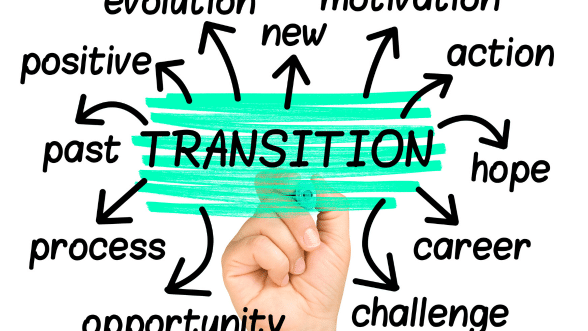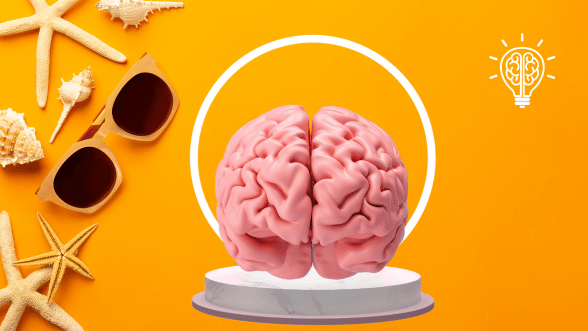What Are Task Transitions?
Task transitions refer to the process of shifting focus from one task to another. These small, frequent changes happen throughout the day, such as moving from writing an email to attending a meeting or switching from deep work to answering phone calls.
Unlike life transitions, which involve major shifts like career changes or moving to a new city, task transitions (micro-transitions) occur multiple times a day and impact short-term focus and productivity.
Some task transitions are intentional and necessary, while others are disruptive and unplanned. Learning to manage task transitions efficiently can reduce lost time, mental fatigue, and the frustration of feeling unproductive.
How Task Transitions Relate to Executive Function
Task transitions rely on several key executive function skills, including:
- 🔄 Cognitive Flexibility: The ability to shift from one task to another smoothly.
- 📅 Task Initiation: Starting a new task without hesitation or procrastination.
- 🚀 Impulse Control: Resisting distractions and staying on track between transitions.
When these skills are strong, transitions happen effortlessly and efficiently. When they’re weaker, transitions can feel slow, disorienting, or overwhelming, leading to procrastination and productivity loss.
Common Challenges with Task Transitions
Struggling with task transitions can show up in different ways, including:
- 🔄 Frequently bouncing between tasks without making real progress.
- ⏳ Taking a long time to mentally “reset” between activities.
- 🚪 Struggling to start a new task after finishing the previous one.
- 📱 Getting distracted during transitions (e.g., checking social media or emails instead of moving to the next task).
These challenges are common, but with the right strategies, task transitions can become smoother and more intentional.
Why Do Some People Struggle with Task Transitions?
1. Lack of Closure on Previous Tasks
If a task feels unfinished, the brain struggles to let go and fully engage in the next activity. This leads to lingering thoughts and difficulty refocusing.
2. Mental Overload
Switching tasks requires disengaging from one thought process and shifting to another. Too many transitions in a short period can drain cognitive resources, making it harder to stay productive.
3. Dopamine-Driven Distractions
During transitions, the brain craves quick dopamine boosts, making it tempting to check emails, scroll social media, or engage in other distractions instead of smoothly moving to the next task.
4. Poorly Structured Workflows
Without clear transition routines, shifting between tasks can feel chaotic, leading to wasted time and procrastination.
How to Improve Task Transitions
✅ 1. Use a Countdown Timer Before Switching Tasks
Give your brain time to prepare for a transition by setting a 5-minute warning before shifting to a new task. Example:
- ⏳ “In 5 minutes, I will stop writing and start preparing for my meeting.”
- 🔔 Use a timer to create an external cue for transitions.
✅ 2. Create Transition Rituals
Having small, intentional routines between tasks can make transitions feel smoother. Examples:
- 📌 Closing all browser tabs before switching to a new project.
- 📖 Taking a deep breath or stretching before starting a different task.
- 🎶 Playing a short song or sound to signal a transition.
✅ 3. Group Similar Tasks Together
Constantly switching between different types of tasks creates cognitive friction. Instead, try batching similar activities:
- 📩 Set specific times for checking and responding to emails.
- 📋 Group meetings together to avoid constant disruptions.
- ✍️ Dedicate focused blocks of time for deep work.
✅ 4. Write Down Loose Ends
Before transitioning, offload lingering thoughts so they don’t interfere with your next task:
- 📝 Keep a “task parking lot” where you jot down unfinished ideas.
- 📋 Create a quick checklist for anything that needs to be revisited later.
✅ 5. Reduce Unnecessary Transitions
Not all transitions are needed—many happen due to distractions or inefficient workflows. Reduce unnecessary switching by:
- 🚫 Avoiding multitasking, which forces constant transitions.
- 🕑 Scheduling focused work blocks without interruptions.
- 🔔 Turning off non-urgent notifications during deep work sessions.
Final Thoughts: Task Transitions Can Be Managed
Struggling with task transitions can create frustration, wasted time, and productivity loss. However, with the right strategies—such as transition rituals, structured workflows, and cognitive flexibility exercises—shifting between tasks can become smoother and more efficient.
By improving executive function skills related to transitions, you can reduce mental fatigue, increase productivity, and feel more in control of your workflow.
📞 Need personalized support? Contact us for executive function coaching today!




